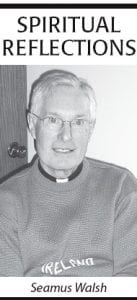One of the powerful books of the 60s was Michael Harrington’s The Other
America: Poverty in the United
States.
Among other things Harrington said in his book: The millions who are poor
in the United States tend to
become increasingly invisible…
It takes an effort of the intellect
and will even to see them…
That the poor are invisible
is one of the most important
things about them. They are
not simply neglected… they are
not seen.
(Chapter 1)
And Harrington could have written the same thing about Cook County. In 2008 an unbelievable 9.1% of our population lived below the poverty level. With the economy turning even worse since, that number must have increased. But, how many of us know these people? Most of them are invisible.
Kids in poverty in 2004 were 10% of that population. But by 2009 that number had risen to 12.9%. In 2005, 28% of our children in Cook County were eligible for free/ reduced lunch, but by 2009 that number had climbed to 35.2%. Children whose families visited the Food Shelves in 2006 in Cook County numbered 421, but by 2009 they numbered 686. How many of those people do you and I know personally? We don’t. Harrington is right. They are invisible.
Our county’s Food Shelf is housed at the Congregational Church here in Grand Marais and provides food assistance to households with no other source of food in a particular month. Our Food Shelf served 71 households in August— or 155 adults and 76 children. These 231 people received some 4,690 lbs. of food. How many of those families do you and I know? I don’t, and I suspect, neither do you. Theyare invisible.
The Food Shelf is funded not through any federal or state programs, but through the generosity of individuals and groups in Cook County. All money donated goes directly to buy food.
Currently each family is given a box with three days worth of food. The menu includes breakfast cereal, dried or boxed milk, canned fruits, juice, peanut butter and jelly, canned vegetables, canned pork, gravy mix, stew, tuna, sauce and pasta, rice, boxed mac and cheese. Dessert is usually fiber or cereal bars. There is a “grab shelf ” where families may choose four items—some weeks there may not be much to take, but other weeks there may be some cooking oil, coffee, tea, dessert mixes, etc. Each family can also receive vouchers (based on size of family) to be redeemed at local grocery stores.
I began with Michael Harrington’s observation that the poor are invisible. Ralph Ellison in his classic Invisible
Man,
had the same observation about the black population. In the prologue to his book he wrote: I am an invisible
man. No, I am not a spook
like those who haunted Edgar
Allan Poe; nor am I one of your
Hollywood-movie ectoplasms.
I am a man of substance, of
flesh and bone, fiber and liquids
– and I might even be
said to possess a mind. I am
invisible, understand, simply
because people refuse to see
me…
If a part of the population is invisible, then we need not worry about them. But they are real, they exist. So, we must not merely worry, we must see them and help. What is your church, for example, doing about this huge issue of poverty in Cook County?
Each month a member of the
Cook County Ministerium will
offer Spiritual Reflections. For
September, our contributor
is Father Seamus Walsh of
St. John’s Catholic Church in
Grand Marais.



Loading Comments